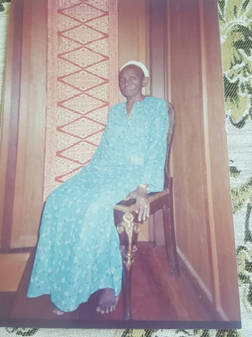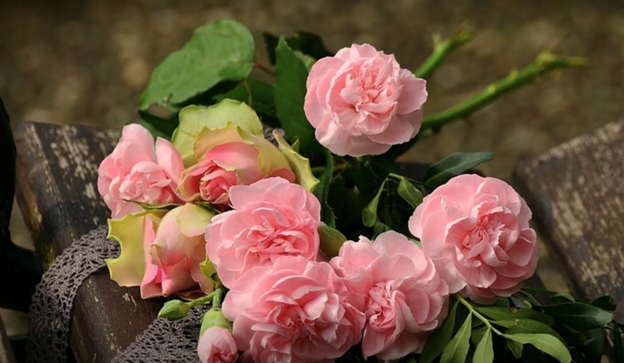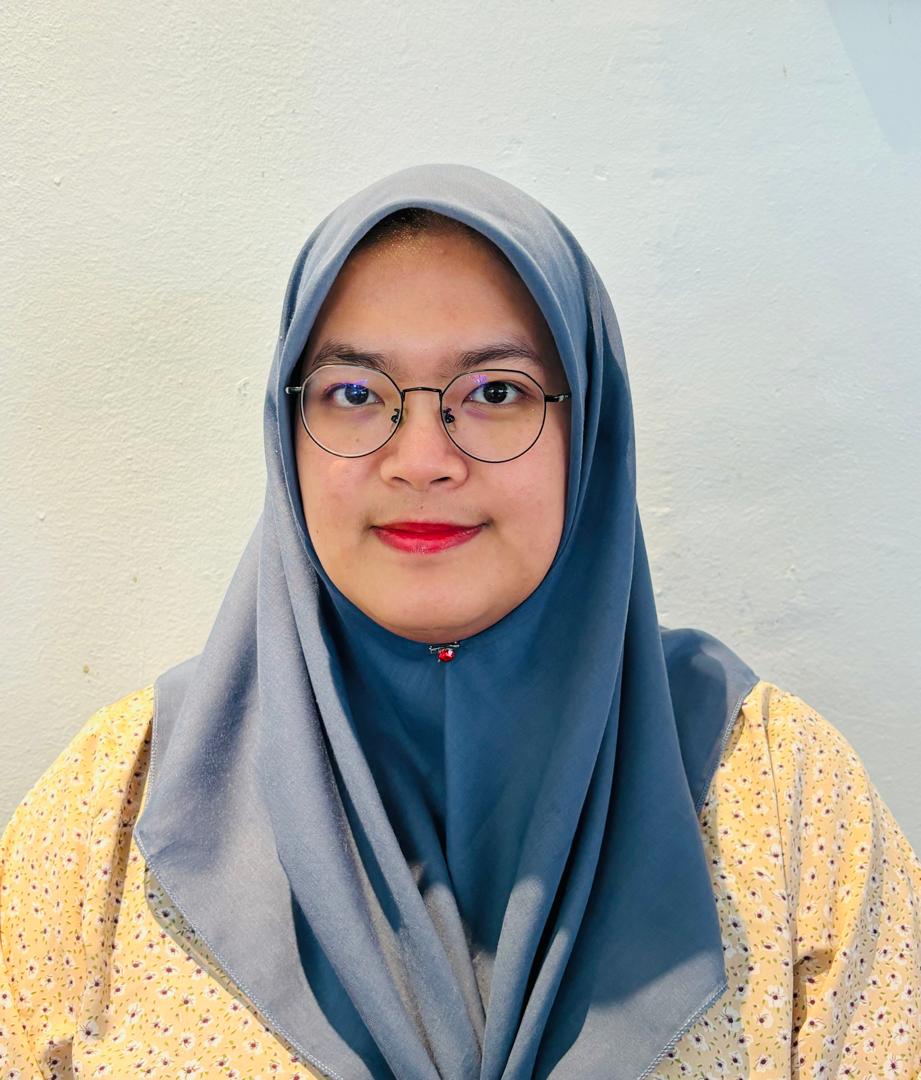
Introduction
Dina: “Betul ke hok Ya cakak tu? Ya betul betul hamba? Dari Ethiopia?” (Is it true what you said? You are really a slave? From Ethiopia?)
Ya: “Ye. Betul, patik dari Mesir. Asal usul patik… pernoh dengor Ethiopia. Tapi patik duduk kat Mesir, dulu pah tu Mesia lama do-oh.”(Yes. I’m from Egypt. I think my roots are from Ethiopia. But I used to stay in Egypt before moving to Malaysia.)
I met Ya about three times in 2006. She called me on the telephone, telling me to hurry, hurry, time was flying past fast, so we had better get cracking. I flew back each time she called and dashed to the kitchen where she always waited.
One time, she wanted to show that she could dance the tango. She sashayed in the room to an imaginary song and said“Kalu patik dok jage umoh ne, patik jadi pelakon kat Amerika tu! Pelakon favourite patik… Marilyn Monroe. Nok dengor cite Ya, Ku Dina? Ingak ye, lepas tu buat pilem Ya.” (If I were not a caretaker of this house, I would have become an actress in America. My favourite actress is… Marilyn Monroe. Do you want to hear about my story, Ku Dina? Just remember to make a movie about me later.)
Ya stood up and acted out a Hindustani film love scene. She pretended she was behind a tree, wooing her lover. I was delighted.
Ya continued. “Patik nok semboh cerita kat Kak Dina. ini lah cite patik. Orang umoh panggil patik, Ya, Mariam, tapi nok senang, panggil patik Ya. Tapi, nama sebenar Ya, Desta. Bonda patik bagi nama tu kak patik. Itu la hok patik boleh ingat masa patik kecik. Desta.” (I want to share my story with you. This is my story. The people in this household call me Ya or Mariam, but it is easier to call me Ya. But my real name is Desta. My mother gave me that name. That is what I can remember from my childhood. Desta.)
Our interviews were recorded and the excerpts would be shared on this platform here from time to time, just like in chapter one of this series.
Whispers of Ya’s Past
There are many truths to Ya’s story. Family members said she was sent to work for Almarhum Sultan Muhammad Syah II and was accepted as part of them later on.
Another family member and the late Ku Ah had heard that Ya’s aunt had persuaded Ya’s parents to allow her to work for a rich Malay family. What we unanimously agreed on was that Almarhum was a pious man, who abdicated the throne in protest against colonial rule.
“Zaman tu, patik banyak kena belajar. Bahasa baru, care idup baru. Mulanya musing sikit. Maklumlah, patik ni orang pasir. Oooofff. Tapi nok kate idup patik susoh dok. Bila patik masuk
keluarge baru, patik tengok dalam umoh, macam istana. Ramainya cucu ketua umoh tu! Ada tukang masok – baik orang dia – dia ajor patik masok, jaga umoh, semua lah! Baik-baik belaka. Lepas kerja, mereka ajok patik main. Macam macam main kita semua. Masok masok, guli guli. Ya masa kecil-kecil di Mekah, main tutup mata, cari orang. Kalau jatuh, jatuhlah! Budak-budak di Mekah bermain macam budak-budak di sini juga.
“Patik kerja kuat. Patik buat apa yang disuruh. Semua untuk patik dapat lupakan hidup patik dulu. Oh, Ku Dina. Bila matahari terbit kat kampung patik dulu, macam masuk syurga, cantik. Bila dah petang tu, macam alam lain.”
(During that period, I had to learn a lot. A new language, a new lifestyle. It was a bit confusing. What to do—I am a “sand people” [coming from a desert area]. Oooofff. But I am not saying my life was difficult. When I joined this family, I was surprised by the house—it is like a palace. The family’s head has so many grandchildren! There was this cook – they were nice – they taught us how to cook, look after the house, everything! Everything was fine. After work, they would invite me to join their games. We played all sorts of games. Cooking, marbles. When I was a child in Mecca, we used to play hide and seek. We fell all the time! Children in Mecca play games like the children here do.
I worked really hard. I did everything I was asked to do. I did everything to forget my past life. Oh, Ku Dina. When the sun rose in my old village, it looked like paradise. When the sun set, it was as if you have entered a different realm.”)
Ya was not the only young child to work for the family. Safar, Berserah and one young boy who remains unnamed joined her and they became fast friends. According to my cousin and late grandaunt Ku Ah, Safar had a tragic story.

Beyond Servitude
Safar was walking in the desert alone, aways from her home when she noticed something. Safar saw a comb of bananas, which appeared out of the blue, all yellow and ripe, on the sand. She looked at it curiously. Prior to this, her sister and friends had been taken away by slave traders. Her mother and father cried and called to the gods to get them back.
The bananas enticed Safar. Then, the bananas moved – probably tied to a string – and the young girl followed it. In an instant, a sack was thrown over her head and she was taken away.
In her adult years, she had expressed great regret that she had not stayed home.
Then there is the story Ya whispered to me, of how some of the young boys who had gone out to play in the desert found a trail of flowers not native to their country. Like all young people, curiosity won out and they met their fate.
It was when they arrived in Malaya that they recognised the flower: bunga mawar Melayu (Malay rose). That was the story I was told.

Despite the fact that they had become a part of the family and the local landscape, they were still enslaved people. Their truths and memories would always be disputed and silenced by their masters and their descendants.
In the time we undertook this research project, we have learned one thing: truths were manufactured to protect reputation at the cost of the innocent.
We found documents from the British Archives that reveal the base character of certain personalities, which led to rigorous discussion. Whose truth are we to show in the would-be documentary?
In two emails sent to me by my late cousin Tengku Ismail Su, the songket maker, dated 21 September 2007 and 14 April 2008, he wrote:
Ya recalled as it was yesterday. “I was playing games with my elder sisters and friends further away my house when a band of Arab slave traders raided our village”. This happened so sudden we were caught by surprised with those noises of gun fire really stunt us which hamper our movement of escaping from the life of slavery. We were rounded up and handcuffed, forced to walk for nearly a week to the nearest coast, were then transferred into a dawf crudely made Arab wooden boat to a slave trading collecting centre near the port of Aden at the tip of Arabian Peninsula.
I came from a noble tribe my father a handsome and tall, a village chieftain. Our village is somewhere between the border of Ethiopia and Somali the horn of Africa. Being captured and handcuffed is a terrible ordeal for us. We were first auctioned at a slave market and bought by an Arab slave merchant, then taken by camel across vast desert to Jeddah slave market. With my exotic beauty was spotted by the head Nubian eunuch from the household of the Sheriff Hussein. Luck is on my side I and my parents and sisters were bought into this illustrious family the descended of Prophet Muhammad, the Guardian of the two Holy Cities of Mecca and Medina. The slave merchant make a handsome profit from us, it is always a custom for them to take a great care of their newly captured slave from being sexually abused such rape in order to fetch a good price. I was presented as a gift to the ex-Sultan Muhammad who was at that time a state guest of the Sheriff Hussein. Unlike other Nubian slaves bought by your grandmother and Tengku Maimunah directly from trader”
He continued, “Ya traced and managed to find her family again in 1935 during ex-Sultan Muhammad second pilgrimages to Mecca. She was welcome to go back to her family but she prefers to be with her master handsome prince living in Singapore and country palace of Gong Kapas in the back water of Terengganu Sultanate.”
“Mariam or Ya affectionate know in the family quiet passed away at the age of 85 years old in rundown Istana Gong Kapas where her handsome Sultan passed away 50 years ago but her linger as it was yesterday. When ever I saw her story of her life unfold of tragic to romantic love.”
The email above has been replicated verbatim from the email.



